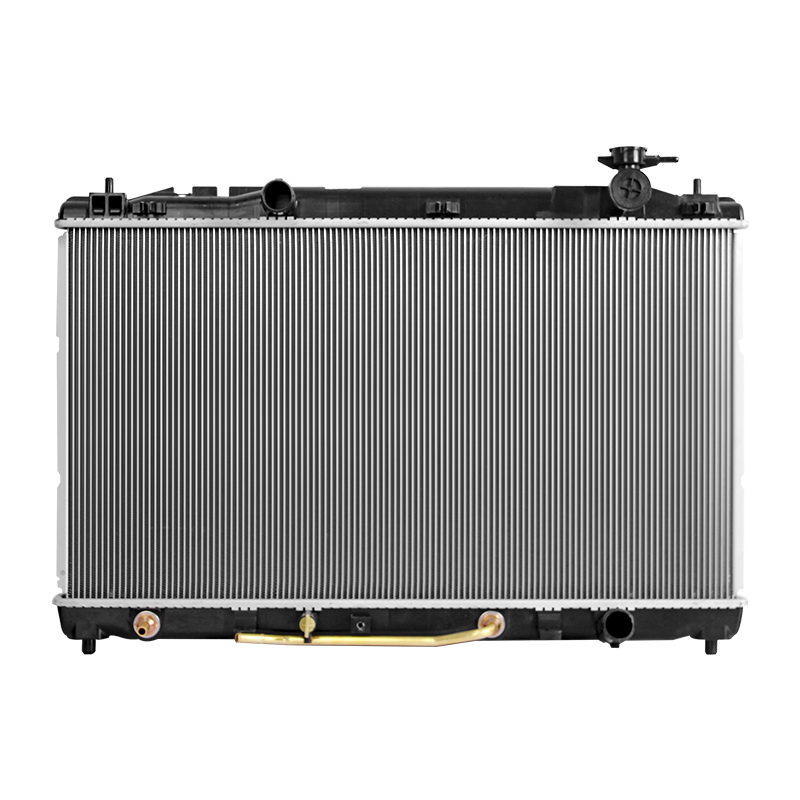stone.xu@goldensunautoparts.com
How does Auto Radiator perform in terms of durability and corrosion resistance in terms of surface treatment and coating?
2024-09-18
When it comes to Auto Radiator surface treatment and coating, durability and corrosion resistance can be enhanced in a variety of ways. These treatment technologies are designed to prevent corrosion and wear caused by the environment, coolant or operating conditions, thereby extending the life of the radiator. Here are the specific performances of surface treatment and coating:
Anodizing is a protective layer of aluminum oxide on the surface of aluminum radiators. Aluminum oxide has high corrosion and wear resistance, which not only protects aluminum from corrosion, but also improves its resistance to oxidation. This treatment is particularly suitable for radiators exposed to moisture and salt water environments, such as coastal areas or areas where de-icing salt is used in winter. The anodized layer is strong, durable, and will not peel off easily.
Epoxy resin coating is widely used on radiator fins and pipes. It can form a tough protective film to prevent moisture, salt and other chemicals from penetrating the metal surface and causing corrosion. Epoxy coating can also enhance the radiator's scratch resistance, making it less likely to be damaged by minor physical impacts. This coating is often used for radiators that need to face extreme environments (such as industrial vehicles or heavy trucks), and can provide reliable protection under harsh conditions.
Galvanizing is a process where a layer of zinc is applied to the surface of steel or copper. Zinc has excellent oxidation resistance and can provide electrochemical protection for metals. When the zinc coating on the surface of the radiator is damaged, the zinc will preferentially oxidize, thereby protecting the underlying metal from corrosion. Although aluminum radiators are not galvanized, some copper or steel radiators use this method to increase their corrosion resistance.
Aluminum-silicon coating is a common surface protective coating for radiators that can provide excellent corrosion resistance in high-temperature environments. This coating remains stable at high temperatures and is not easy to oxidize or degrade, making it suitable for use in high-heat environments in engines. This coating can not only effectively prevent corrosion, but also improve the heat resistance of the radiator, making it suitable for use in high-performance vehicles or engine systems with large heat loads.
Nano coating is a new high-tech surface treatment method that can form an extremely thin coating on the surface of the radiator to reduce the contact between corrosive substances (such as water and salt) and metal. Nano coating not only has excellent corrosion resistance, but also has anti-fouling function, which can prevent dust, dirt and other impurities from adhering to the surface of the radiator and maintain heat dissipation efficiency. The coating is ultra-thin and transparent, and does not affect the appearance and thermal conductivity of the radiator.

The fins of radiators are often exposed to the air, which is prone to the accumulation of dust and contaminants, which can lead to corrosion. To solve this problem, manufacturers often apply special coatings to radiator fins, such as anti-rust coating or a layer of lightweight corrosion-resistant material to reduce their direct contact with the external environment and improve overall corrosion resistance. These coatings not only improve corrosion resistance, but also make the fins more durable, able to maintain their structural integrity during long-term use, and reduce fin breakage or wear.
Protective varnish is a transparent coating applied to the surface of the radiator, especially copper radiators, to provide additional protection. It not only blocks moisture, but also prevents oxidation and corrosive substances from entering the metal. The varnish layer prevents metal oxidation, maintains its appearance, and prolongs its service life.
Application range: This type of treatment is particularly suitable for use in low-corrosion environments and is often used in industrial applications that require high performance.
Some high-durability radiators use HDPE coatings to cope with extreme operating environments. HDPE coatings have excellent corrosion, impact and chemical resistance. This coating is usually applied to heavy equipment or vehicles working in harsh environments such as salt water, high humidity, etc.
Through the above multiple surface treatment and coating technologies, Auto Radiator can significantly enhance its corrosion resistance and durability. Different types of coatings and treatment methods are determined according to material properties and usage environment, which can effectively extend the service life of the radiator and ensure its reliability under harsh conditions.
Explore Our Products